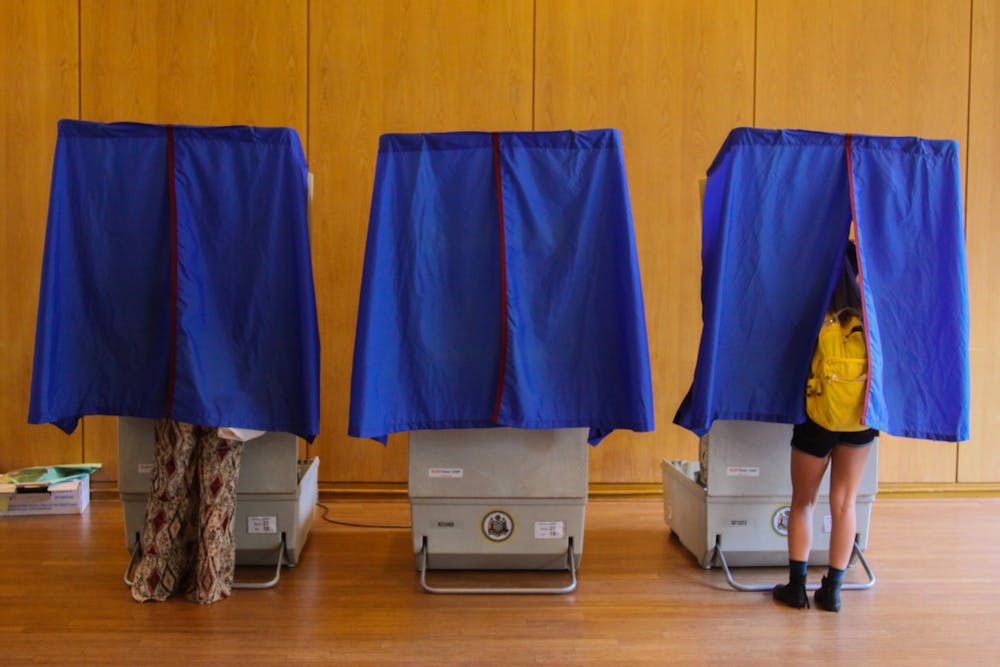
Coronavirus-related restrictions have caused voter registration to increase at a slower rate than in recent presidential election years.
Credit: Tiffany PhamThough voter registration numbers typically increase significantly before a presidential primary, coronavirus restrictions and statewide lockdowns caused them to increase at a much slower rate this year.
Pennsylvania’s voter rolls increased by 2.5% between the November 2015 election and the 2016 primary, The Philadelphia Inquirer reported. Between the November 2019 election and this year's June 2 primary, however, the list of eligible voter grew by only 0.8% even after the delayed primary gave residents an additional month to register.
The decline in voter turnout is a direct result of restrictions on in-person interaction that prohibit campaigns from operating in a traditional manner. Without in-person voter registration events, door knocking, candidate support parties, and voter registration sign-up activities on college campuses, voter registrations are growing much slower than normal, the Inquirer reported. The Pennsylvania Department of Transportation and many other government offices have closed their doors as well, bringing all in-person registrations to a halt.
Pennsylvania’s decrease in voter registration is not unique among neighboring states, and even in comparison to nationwide trends. In Pennsylvania, however, there is no same-day registration, unlike Michigan and Wisconsin, which are also expected to be crucial swing states in November. Voters must also be signed up 15 days before voting, the Inquirer reported, and lower registration numbers can affect voter turnout.
Before the pandemic sparked nationwide closures, the Center for Election Innovation and Research concluded that new voter registrations in January 2020 were even higher than at the same point in 2016, according to a report based on data from 12 states as well as from the nation’s capital. This trend did not continue after the pandemic.
Campaigns and political advocacy groups — including those on Penn's campus — are relying on digital outreach methods and hosting virtual events to capitalize on the political momentum that was at a high before widespread coronavirus-related closures.
Student political groups at Penn have already begun working remotely to combat the decrease in voter turnout this year.
After the University announced its plan for the fall semester, Penn Democrats, Penn College Republicans, Penn Justice Democrats, and Penn for Biden told The Daily Pennsylvanian that while they are hopeful about getting students politically engaged this semester, they will rely primarily on phone banking, text banking, and virtual guest speakers rather than on in-person campaign events traditionally held on campus.
In partnership with the Office of Government and Community Affairs and the Netter Center for Community Partnerships, Penn Leads the Vote — a student-run, non-partisan program focused on civic engagement — released the University's official 2020-21 voter engagement action plan to reach 100% voter registration for Penn's eligible voters by 2028. Though PLTV will not expect anyone to come to an in-person event this fall, the plan, released June 1, will be continually updated as the COVID-19 pandemic evolves in order to keep students’ civic engagement from faltering.
The Daily Pennsylvanian is an independent, student-run newspaper. Please consider making a donation to support the coverage that shapes the University. Your generosity ensures a future of strong journalism at Penn.
Donate







